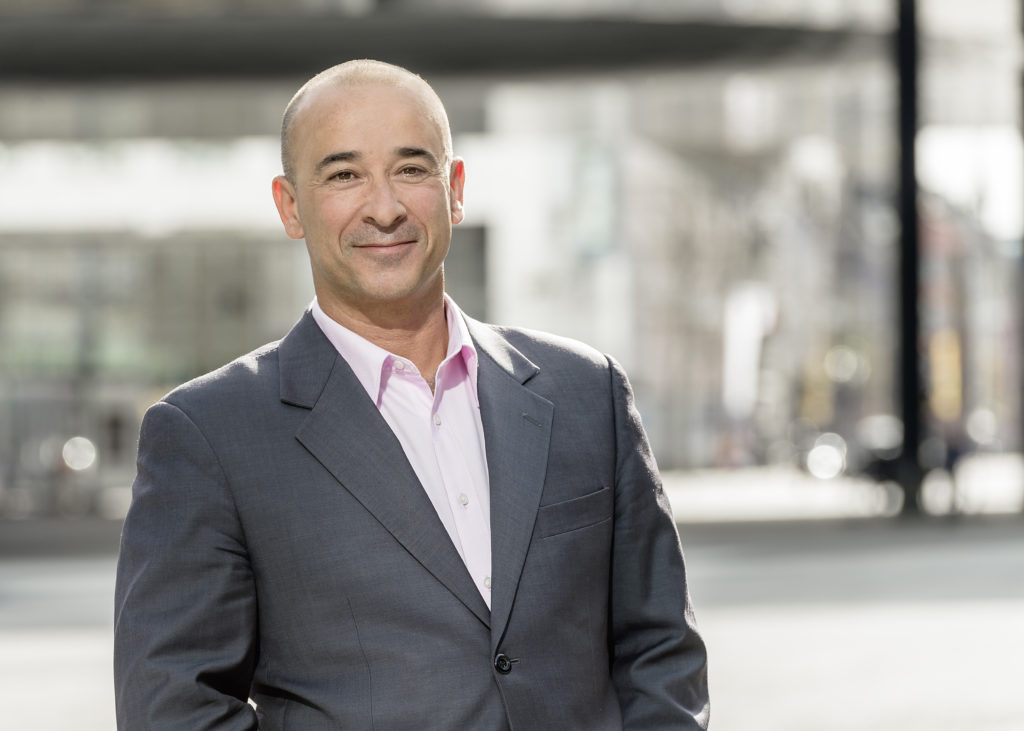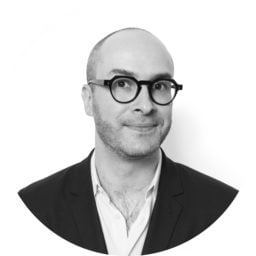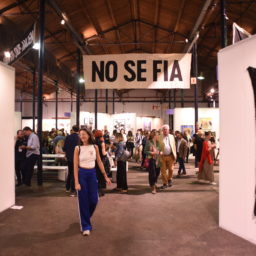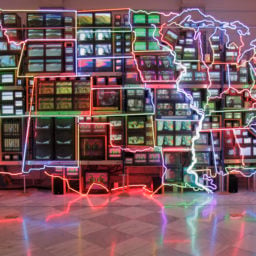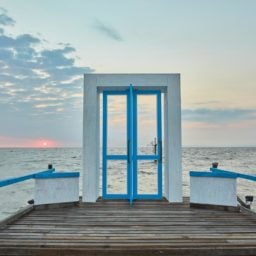Last week, the denizens of Buenos Aires suddenly found themselves awash in art—dotting their public parks, climbing up colossal buildings, punctuating desolate industrial areas, and even built into the pavement underfoot. This eruption of artworks, most of which were made by up-and-coming Argentine artists, was the most visible flowering of Art Basel Cities, the new master plan being pursued by the Swiss art-fair juggernaut to help cultivate the global art ecosystem.
Following the flurry of big-idea talks and celebrations that kicked off the initiative last November, the exhibition, curated by Cecilia Alemani, lasted for a week and will now evolve into a new stage that is still taking shape, but promises a long-term period of economic development for the local art scene.
Does that sound a bit nebulous? Well, such is the nature of the the grand experiment that is Art Basel Cities, which is gradually taking form in real time. In fact, it helps to imagine its well-intentioned organizers as laboratory technicians, painstakingly attempting to transmute the enormous sums of global capital ricocheting through the art and luxury sector into a sustainable energy source for struggling art scenes, like the one teetering on the edge of the world in Buenos Aires. Complicating matters, the Argentine peso’s utter collapse this year has meant that these technicians have been forced to work in a particularly bumptious environment, amid the closure of government ministries and the slashing of budgets and tightening of belts nationwide.
None of this phases the man behind this experiment, Art Basel director of business initiatives Patrick Foret, who has a keener insight into the intersection of art and global capital than most. A French-born fluent Japanese speaker who frequently uses the word “beauty” when talking about business, Foret was previously the project manager for the extravagantly ambitious Louvre Abu Dhabi and Guggenheim Abu Dhabi complexes, working for the emirate’s Tourism Development and Investment Company to create an art utopia on Saadiyat Island.
To better understand how Art Basel Cities works and what comes next, artnet News editor-in-chief Andrew Goldstein sat down with Foret in Buenos Aires to discuss the novel project underway.
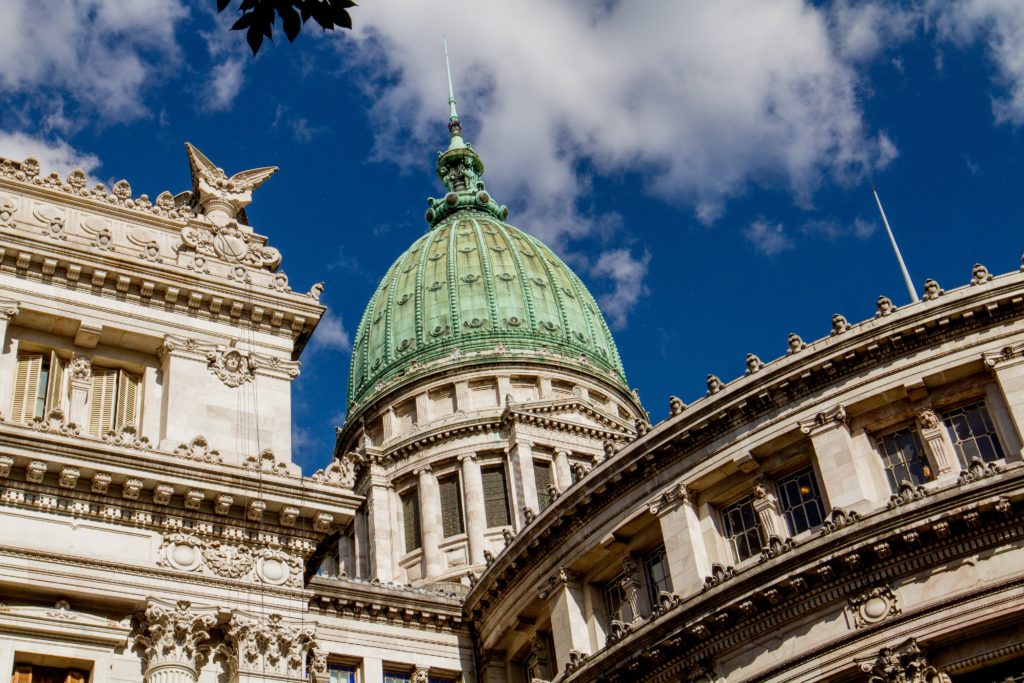
Buenos Aires Congreso de La Nacion. Courtesy of the City of Buenos Aires
The art calendar is dotted with art fairs in cities around the world, but at the same time it’s become a fairly monotonous experience, with each fair taking place in an antiseptic convention center that may as well be on a space station, largely detached from its local context. Here, with Art Basel Cities, you are introducing something new into the mix that is not an art fair, not a biennial or triennial, and not just a gallery weekend. What is Art Basel Cities, and what is its objective?
We decided quite a few years back that we were not going to have a fourth Art Basel show. As you pointed out, there are so many art fairs already. We’ve been around for 50 years now, and we don’t think we can create a show at the same level as the three others, so we would start to cannibalize ourselves. Yet we have an incredible network of collectors and exhibitors that we engage through the fairs, and then year-round.
So we were looking at what more we could do, and we were approached regularly by cities who are very attracted by our economic impact. Our show in Miami Beach has been reported by the city council as generating about a half a billion dollars a year. We would tell them, “No, we’re not doing another fair.”
So I started to explore who these cities were and where we could fit in. For a good two years, I was having conversations with mayors around the world. We realized that there are vibrant art scenes out there with committed governments and passionate players and incredible artists who are not at the center of the art world, and not having the impact they deserve to have.
What Art Basel has to offer is our capacity to communicate with our incredible network at all levels of the art ecosystem—whether it is artists, collectors, dealers, or institutions—and our expertise in creating programming based on where you are in the world. That’s the beauty of this new model and this challenge: every city is its own cultural ecosystem. And the first step of any Art Basel Cities program is for us to have an intense five-month immersion—and that’s not enough—where we conduct more than 100 interviews with all the key players in the art scene. Ultimately, we need to understand the unique cultural proposition of the city.
How does Art Basel Cities help Art Basel overall from a strategic perspective?
For Art Basel, it’s about creating a new form of engagement with our collectors and our clients. We have a leadership role, and as a leader it’s important to innovate and demonstrate to the market that there are new opportunities to explore, new ways to help cities and governments invest in and support their local art scenes and connect them to the broader art conversation. So, in a way, we became a bridge to the international art world.
Is there a way to draw a direct line from helping cities invest in their art scenes to achieving Art Basel’s own business objectives?
A few years back, we were doing some marketing workshops, and we defined Art Basel as “an exchange platform that drives the art world forward.” That offers a great sense of freedom—you can consider more than just shows. Ultimately, we need to create business opportunities, cultural-exchange opportunities, and intellectual-exchange opportunities like Cecilia [Alemani]’s show [in Art Basel Cities] to support transactions in the arts. It’s a new model, so people like you will have a lot of questions, and the art world will have questions too, until such time that we have done it for a few years and it starts to be established.
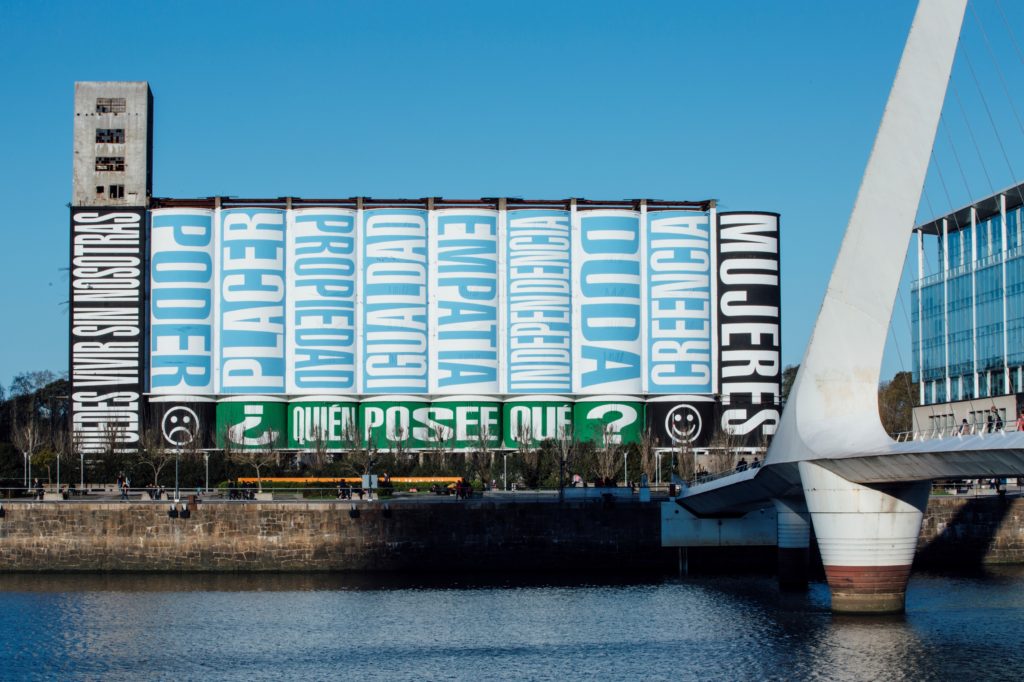
Barbara Kruger’s Untitled (No Puedes Vivir Sin Nosotras You Can’t Live Without Us), 2018. Courtesy the artist and Art Basel
Why did you decide to start with Buenos Aires as the first venue for this new Cities venture?
We are dealing with a government that was very willing to be the first experiment. If I remember, Horacio [Rodríguez Larreta, mayor of Buenos Aires] told us at our very first meeting, “If through the Art Basel Cities exercise we manage to get our art scene to start working together, and catalyze the art scene behind a common goal, this would be an incredible achievement.” And it’s true—when we arrived in Buenos Aires, we had an art scene where everybody was fighting for survival in their own corner, very willing to work with each other, but not doing it.
It took two years for us to build a relationship with the city. Victoria Noorthoorn, the director of the MAMBA [Museo de Arte Moderno de Buenos Aires], was very skeptical when she saw Art Basel, this big trade fair, coming into town. So we really had to listen and to understand, and to make it clear that the hero of Art Basel Cities is not Art Basel, but the city itself and its art scene. Even though the peso collapsed a few weeks back, you can still feel an incredible positive commitment to culture from the government.
That’s the kind of partner that I really want. And we’ve been approached by many cities where that kind of conversation is happening, even more today than ever. Almost 20 years ago there was [Richard Florida’s] book The Rise of the Creative Class about how culture is an important factor in economic development for an urban center, and today I think it is accepted as fact. It goes beyond the Bilbao effect of the Guggenheim museum.
What do you do when a city contacts Art Basel to assess its viability?
We do a bit of due diligence on the local art scene. We also need a bit of common sense—it’s always important when we start a relationship to make sure there is a stable government and a stable economy. We also need to have a very vibrant art scene, with committed players.
How many cities have you done due diligence with?
I’m not allowed to share that, but it’s a lot. More than two dozen. Sometimes it’s quick, and we realize that it’s not a place we want to go because of civil war or unrest—there are incredible art destinations that are unfortunately in political or economic environments that are too risky for us to engage, but we keep them warm for the future. But when we announced the new Cities program in March 2016, we were already in discussions, and then we reached a tipping point that allowed us to sign with Buenos Aires a few months later, in September.
What gave Buenos Aires the Goldilocks factor of being a good location to launch Cities?
There are a few places in the world that are lodged in the imagination, and everyone knows that Buenos Aires is about passion, it’s about music, it’s about tango, literature, movies, the visual arts, and a long commitment to art and culture. We also have some collectors and friends here.
Plus, there was a government that was open-minded, which is important because we were not coming in with a set recipe. After the initial research period, we did a SWOT analysis of the local art scene to devise strategies that will meet the needs of all the players. Out of this, we had to design a comprehensive strategic plan that includes the transfer of expenses and a way to engage with the specific regulatory framework of the city. Then, after designing our approach, we went back and presented our ideas. So, ultimately, Art Basel Cities has been designed with Buenos Aires and for Buenos Aires—and that’s what really catalyzed the whole thing, because we drew input from everyone.

Buenos Aires. Courtesy of Art Basel
So you got buy-in.
Yes, and that buy-in is key for Cities. Because some people were skeptical, and that’s okay. It’s very important that Art Basel, as a partner, is listening and caring. It’s not about us coming in with some big commercial scheme and trying to steal something from the city—we’re here in a very respectful way to celebrate the local art scene, and to do that first you really need to understand it. Being French and stupid, I’m a bit of a romantic, but for me Art Basel Cities is a beautiful business because it is highly romantic—it’s a journey of discovery over the long term. You create opportunities for the future for people who are like us, committed and passionate about pushing art and culture forward, but perhaps isolated from the world. Art Basel, because of its international position, has the opportunity to build a bridge to the global stage for people who have been left behind, because they deserve a chance.
It’s exciting because it’s an experiment.
Yes, and it may remain an experiment over the next 50 years. We have what we call “soft impact” and “hard impact,” with hard impact being an effect that is immediate and measurable through media coverage, or the number of people who came to town, or opportunities created, or the sales that galleries make during a gallery weekend. Then there’s soft impact, which is the less tangible long-term impact that will be felt through creating opportunities for young artists and a connection to the international art world. Today, for instance, we just introduced the head of UBS Canada to Buenos Aires’s minister of culture, and they remembered that Toronto and Buenos Aires are sister cities, and so now they’re talking about working together.
With a project like Art Basel Cities, there’s the input and then there’s the output. We’ve been talking about the output, but one thing that has generated a lot of speculation is how much the program has cost. The local papers have reported that the overall investment from the city was around $2.5 million. How does that break down? Does it cover the research period as well?
The research period is upfront, before we start, though I can’t share those numbers. As soon as we enter talks with a city, we bring our corporate funders on board, so we self-contribute with corporate funding—UBS, for instance, is the lead supporter. So when we open the door of the mayor’s office, we already have some good news, since we’re bringing in outside funding for the arts. Then we look at local corporate sponsorship, but this is important to understand: we identify cultural partners who have never contributed to the arts, because we want to make sure that we’re not disrupting the local ecosystem by taking away sponsors that would otherwise contribute to a museum, for instance, or arteBA. Because then we would be alienating the local art scene. So we made a lot of effort with a lot of legwork and enterprise, and we have some local partners that never considered the arts, fulfilling the government’s mission of expanding the sources of local funding.
But every city is different. There are some cities I’ve talked to where there is zero government contribution, because the government doesn’t contribute to culture, but there’s very strong corporate support, whereas there are other cities where the government is very committed to culture and takes the lead in cultural investment. The beauty with the government of Buenos Aires is that they really see this partnership as a long-term process.
How is this budget parceled out?
Part of the budget is put toward local production, creating jobs locally. So we have hired a lot of people, and the government has hired a lot of people to work on the project, with 15 or 20 people given jobs on both sides. And then there’s part of the budget that goes to Art Basel and is used for international outreach, PR campaigns, social media campaigns, our presence at the show, VIP programs to bring collectors to the city, and then, when our Argentine friends come to the Venice Biennale next year, maybe we will have an event for Buenos Aires. At the fair in Miami, also, we may have a talks program about the future of the Argentine art scene, for example. All of this, of course, without opening up the show floor to the fair itself, because we have very strict and rigorous processes—it’s not just because you are an Art Basel Cities partner that you are going to get into the fair. One gallery, Isla Flotante, did make it into Positions.
Including the city’s $2.5 million investment, what is the total cost of the Art Basel Cities enterprise?
You will have to ask the government if they want to release those numbers. The important thing is that the whole budget is an investment in culture—in the city, in future development, in supporting the local art scene.
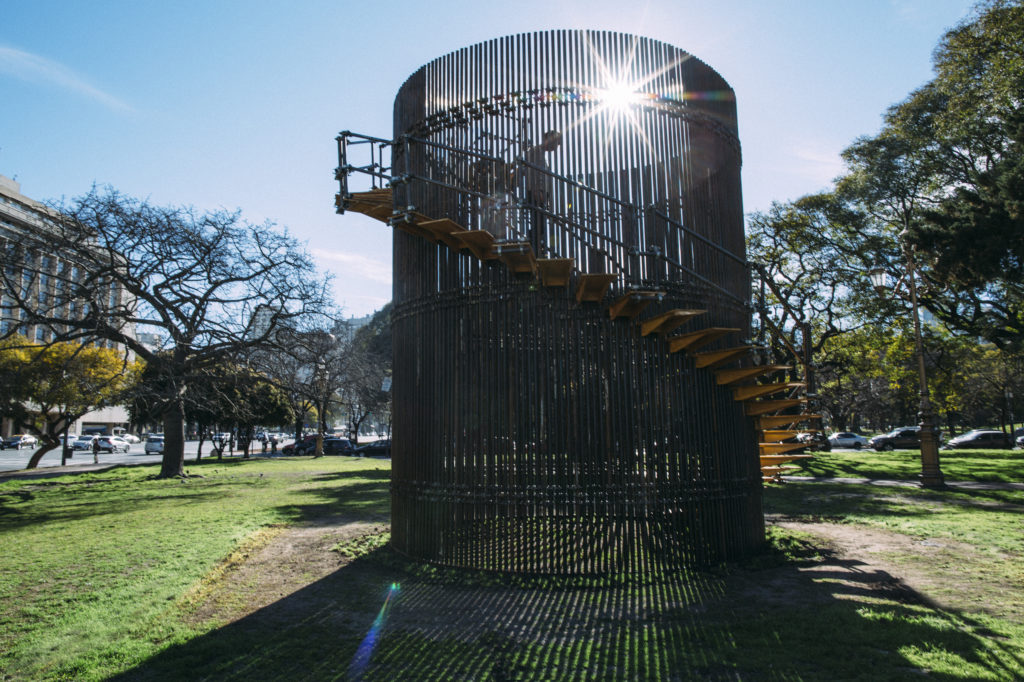
Luciana Lamothe’s Starting Zone. Courtesy of Art Basel
I think that’s important to message, considering the skepticism in the local news reports.
There will always be skepticism until this new experiment becomes more established. But our commitment to Art Basel Cities is very strong, and, though I’m not Swiss, the beauty of Swiss business culture is that it’s focused on quality and the long-term. So we are not under any pressure to sign up the next city next year. It’s still an entrepreneurial journey—any plan you make is disrupted by reality. One morning you wake up and the peso has collapsed, so what do you do? I fear the day when we have a templated model that we bring from city to city, because that won’t work, and we will fail to deliver impact.
What do you say to the locals who are unconvinced about the value of investing in Art Basel Cities amid this economic crisis, who are saying that the government ministries are being cut in half, spending is being slashed, and yet here’s this big, fancy art show?
We’ve been working on this for two years, so it’s not like we started in the midst of the economic collapse. Unfortunately, it’s the story of Argentina that there is a long history of crisis, and if you talk to anyone here they are very sad and disappointed, but also they are philosophical about it in that they are used to enduring crises and having life continue. We are also dealing with the government of the city, not the government of the nation, which is quite different. The city of Buenos Aires is very solid economically, with a strong economic center, and it has its own cultural budget.
Is anything for sale in the show?
We are not involved on that level, but in Cecilia’s show all of the pieces belong to the artists. Collectors from around the world are very welcome to reach out to the artists if they are interested, and they are welcome to buy whatever they find in the art galleries. We hope that the collectors find something they really love, because we are here to fulfill their pleasure—that’s why they come back to Art Basel. We hope that the government will also keep a couple of pieces long-term, though that’s up to them. Here we are not judged on sales, but sales are the spark between a collector and an artist, so that’s very important.
You said that, through your preliminary immersion and studies, you zeroed in on one key problem in the Buenos Aires art scene to be solved. What was it?
From our perspective, there’s a lot of pride in their arts and culture, but there’s at the same time a lack of confidence in their ability to engage with the world. So for us to come in and tell them, “You can do it,” has been very liberating. The beauty has been to see this art scene that has been extremely divided working together toward a common goal, which is: let’s present ourselves to the world. If you talk to people here, there is tremendous optimism and excitement in moving the culture forward, and the government shares that commitment, too.
